You have a footwear business and have googled PLM on the Internet. There seem to be a lot of PLM systems for apparel. Most say they can handle multiple product categories and, oh yeah, footwear. Why is this and can you use one of these systems for your business? This post is about it to give you our impressions.
Industry similarities and differences.
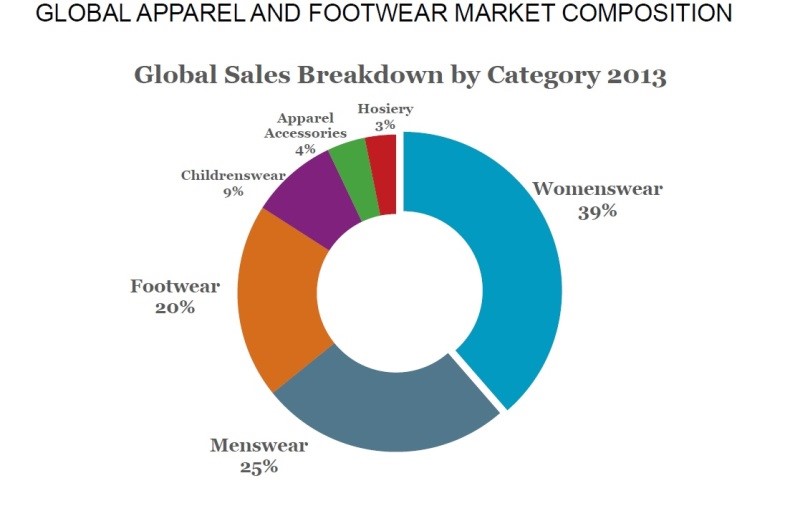
Source: http://tmd433.wordpress.com/2014/03/24/global-apparel-and-footwear-market-update-2014/
Apparel and footwear are similar. Both are fashion-oriented. Both extended supply chains are labor intensive, and the low-tech nature of the work means that often manufacturing happens in developing countries with lower salaries. So why are there so many apparel PLM systems and almost no footwear-focused applications? There are two related reasons. First, there are many apparel companies. The worldwide apparel industry is substantially larger than footwear which accounts for only 20% of sales when looking at the combined markets. (see diagram to right). The textile industry including apparels and fabrics is about ten times larger than footwear. Software companies focus on where there is the biggest demand, so it makes sense that there are more software companies offering applications to apparel. The second reason is that the acceptance rate of PLM systems into apparel companies is higher than in footwear. Apparel has accepted PLM as a critical component of their business.
So what are the differences, why won’t it work for both?
Materials
In the apparel industry, fabric development is often a separate development process from finished goods. Apparel PLM systems often have a separate function to support deployment, selection and testing of fabrics. This development process can include consumption planning, yardage requests from agent or mills such as lab dips, strike-offs and bulk fabric swatches. It is a critical since as much as 70% of the cost of a garment comes from the fabric.
Footwear, on the other hand, has no fabric development but it does have tooling. Each shoe design requires a last and sometimes molds to shape the shoe and outsole during production. For women’s fashion shoes, heels could be another tooled customized item. This tooling is often unique to each shoe design. This means some different processes in product development process and impacts cost analysis.
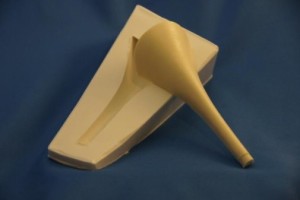
Heel mold
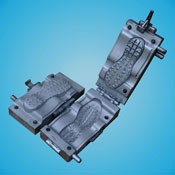
TPR Mould
Another distinction is shoes are not marketed as collections so it is not as common to share a material within a season across products. These difference mean that the underlying structure of the applications must be different.

Last
An apparel PLM solution must have a fabric database as well as separate a library for trims, hardware and embellishments. In the footwear industry, the Material Library is broken down quite differently i.e. by Upper, Lining, Insole, Outsole and other key classifications. In more sophisticated PLM solutions there are separate libraries for tooling like Last, Outsoles and Heels.
Bill of Materials, the BOM
The hierarchies of the Bill of Materials (BOM) differ as well. For apparel companies, there are seasons and/or lines, product groups, collections, possibly sub-collections and then styles and their associated size ranges. Footwear companies have seasons and/or lines, styles, sizes and widths.
Most importantly, and the biggest headache for the many companies that have tried to adapt apparel to footwear is in the underlying structure of the Spec. In cut and sew, the developer defines the Fabric first and then placements of that fabric (sleeve, collar, waist, as examples). In Footwear, users define the component of the show first (Vamp, Quarter, Heel) and then links to the material to be used. This fundamental difference dictates the approach and mindset of the developer, their expectations of the system and the program logic built into the application.

Apparel
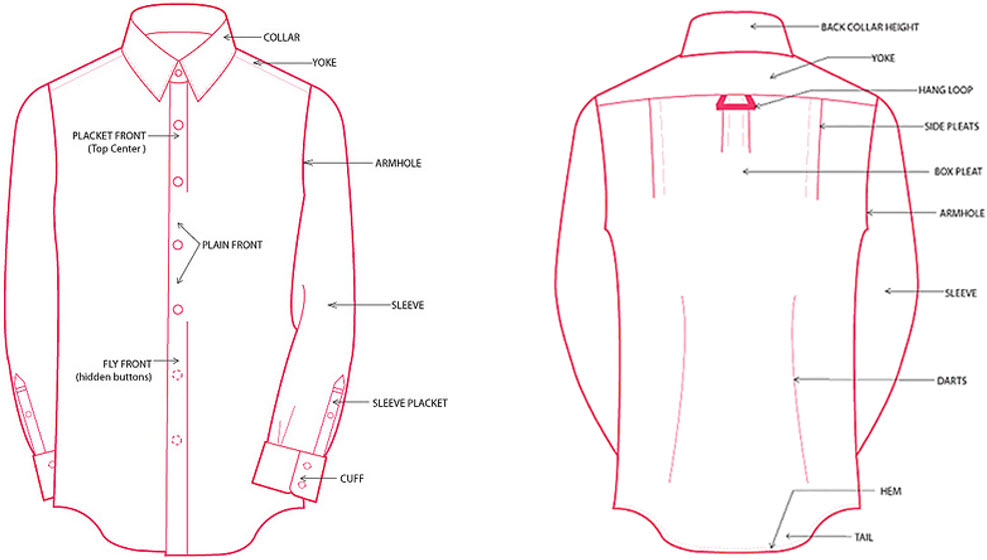
Grading and Sizes
Grading is completely different in these two industries. In Apparel, size grading worksheets with points of measurement are an integral part of the spec. Checking sizes and measurements is done numerous times during development and later in production by technicians.
In Footwear, there are standards for sizing (Europe 43M = US 10D). It is true that there are multiple points of measurement on the last, but this is managed by a technical team and is validated in a physical fitting session, not against point of measurements defined by the developers at the beginning of the design.
So a good footwear system should have a Last Library with enough information for the technical team to support PreProduction Planning and manage Fit tests. An Apparel system must have grading sheets linked to the design Spec from the beginning of the process. Why does every apparel company also include a fit guide with their product?
Sourcing strategies and monitoring supplier performance
The strategy for sourcing apparel is often driven by tariff and customs regulations, resulting in partial manufacturer of goods across several countries. Footwear is rarely sourced this way. Components are delivered to the production factory usually in-country and the final shoe is shipped in its final packaging to the distribution center, or even direct to the retailer.
The regime for footwear in the US is driven by the HTS Classification of product under IFI rules. MFA, NAFTA and other trade agreements govern apparel, not footwear, and drive the dispersed sourcing strategy. These differences drive how partner selection is managed and thus how suppler performance and compliance are monitored.
Margin analysis and costing
Predicting target margins based on cost breakdown is different because of the difference in sourcing strategies and duty structures.
Another difference is the tooling that footwear requires. Lasts and outsole molds are not cheap. That cost needs to be amortized across the expected production run of the style, a concept that does not exist in apparel.
Conclusion
As a software developer, we always review business requirements with future users to ensure that our application is usable and relevant to the business. We see truly fundamental differences between PLM systems designed for apparel and those for footwear:
- Managing material is different (DATABASE)
- The development cycle is different (PROCESS)
- The Technical Package is different (OUTPUT)
- The sourcing strategy is different (PARTNERS/COLLABORATION)
- The approach to product cost and margin analysis is different (CALCULATIONS/REPORTS)
Advances on programming tools and techniques mean applications can be tailored to the needs of specific requirements of a vertical market, but we feel the above differences are massive enough that one solution can never serve both the Apparel and Footwear verticals.

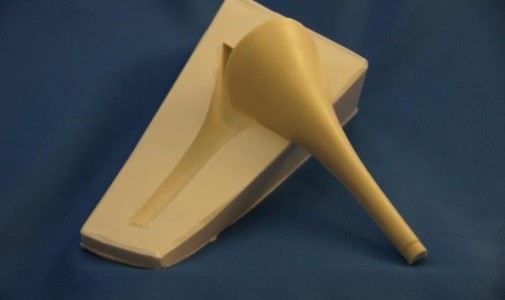
Comments are closed.